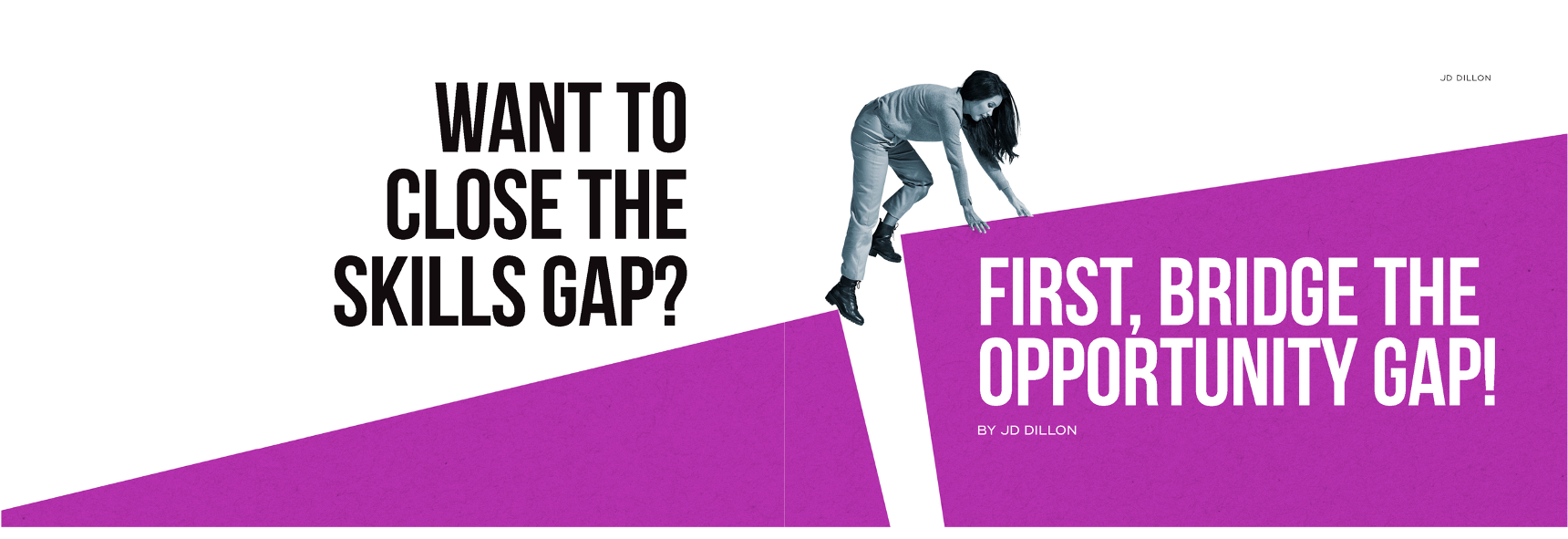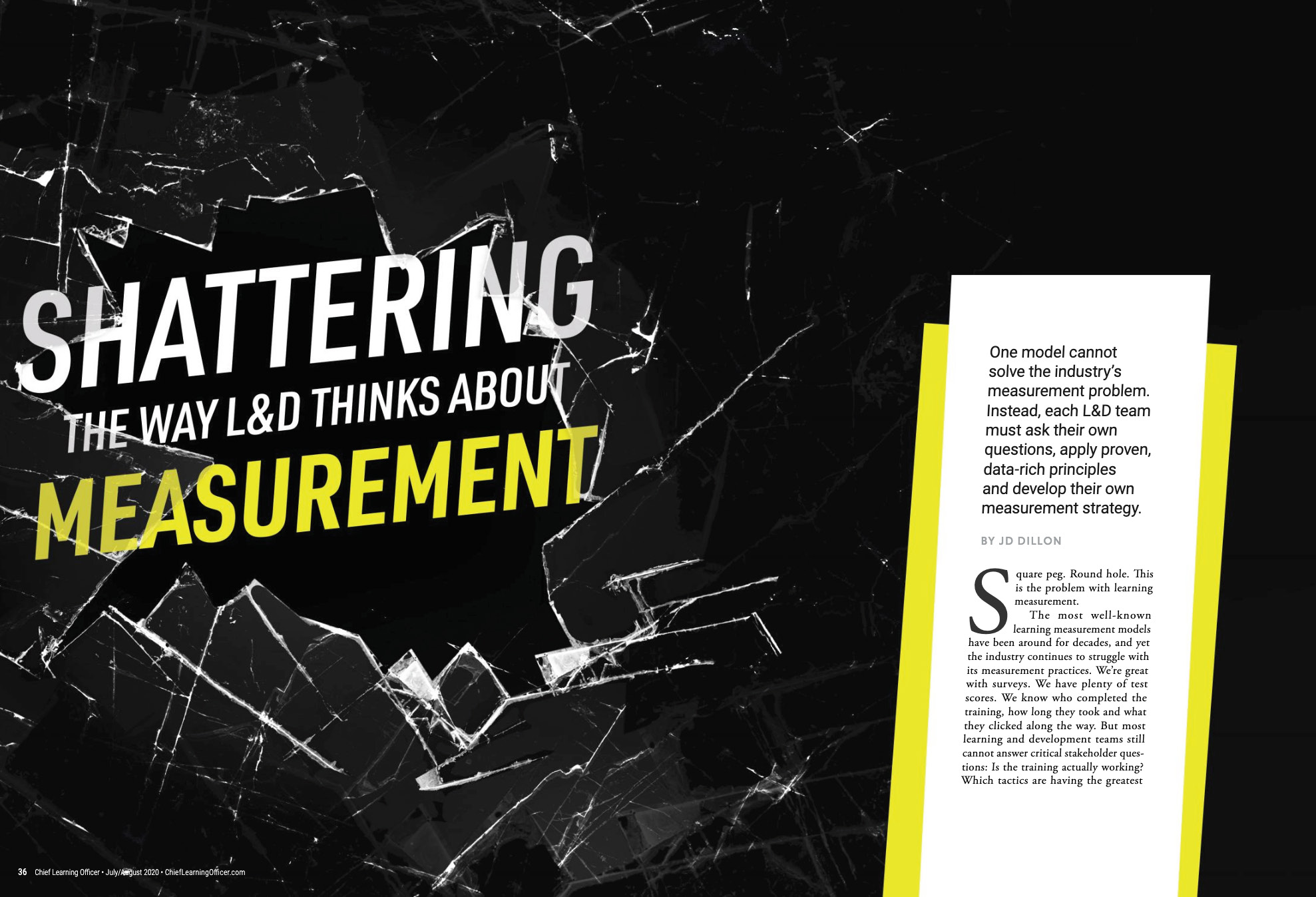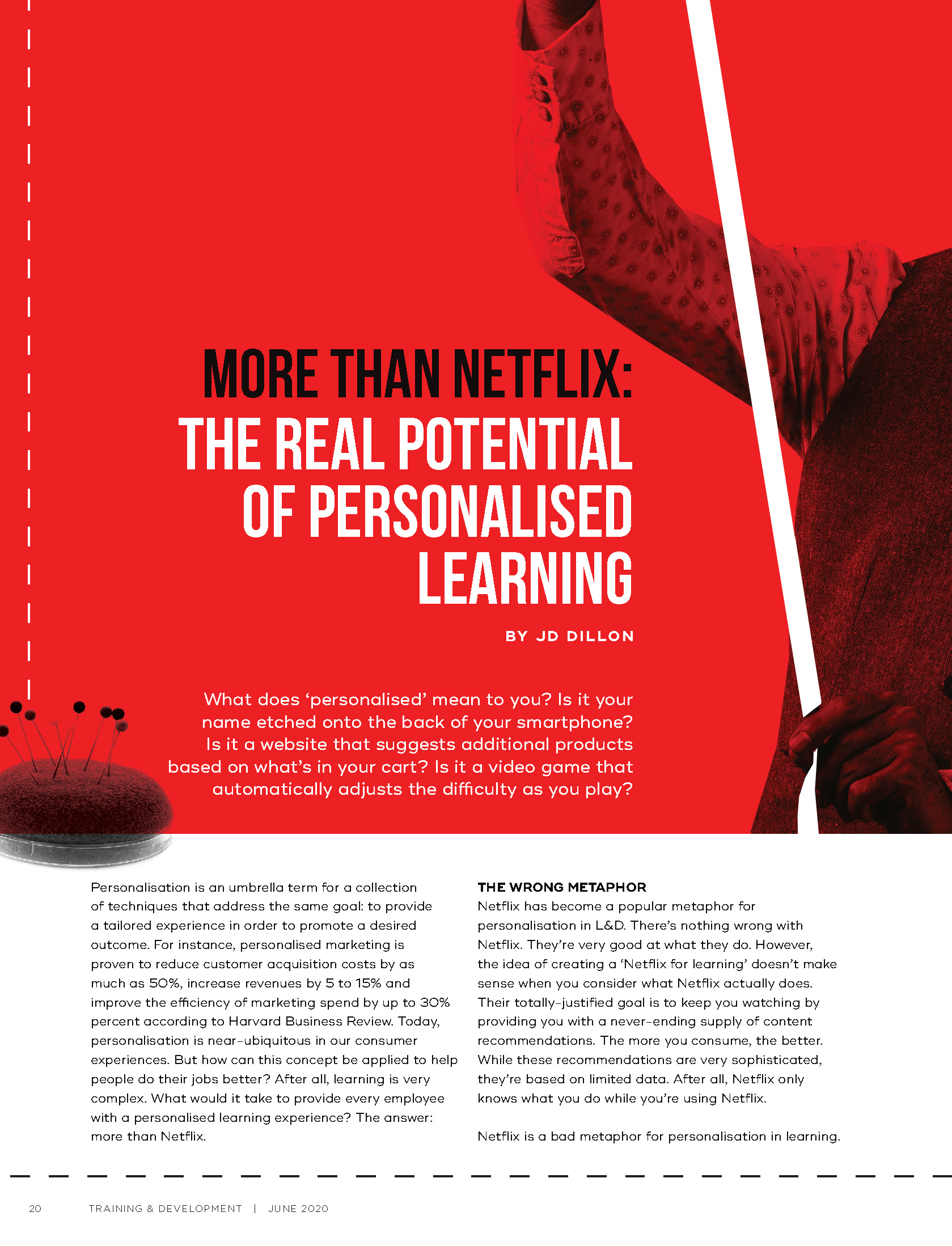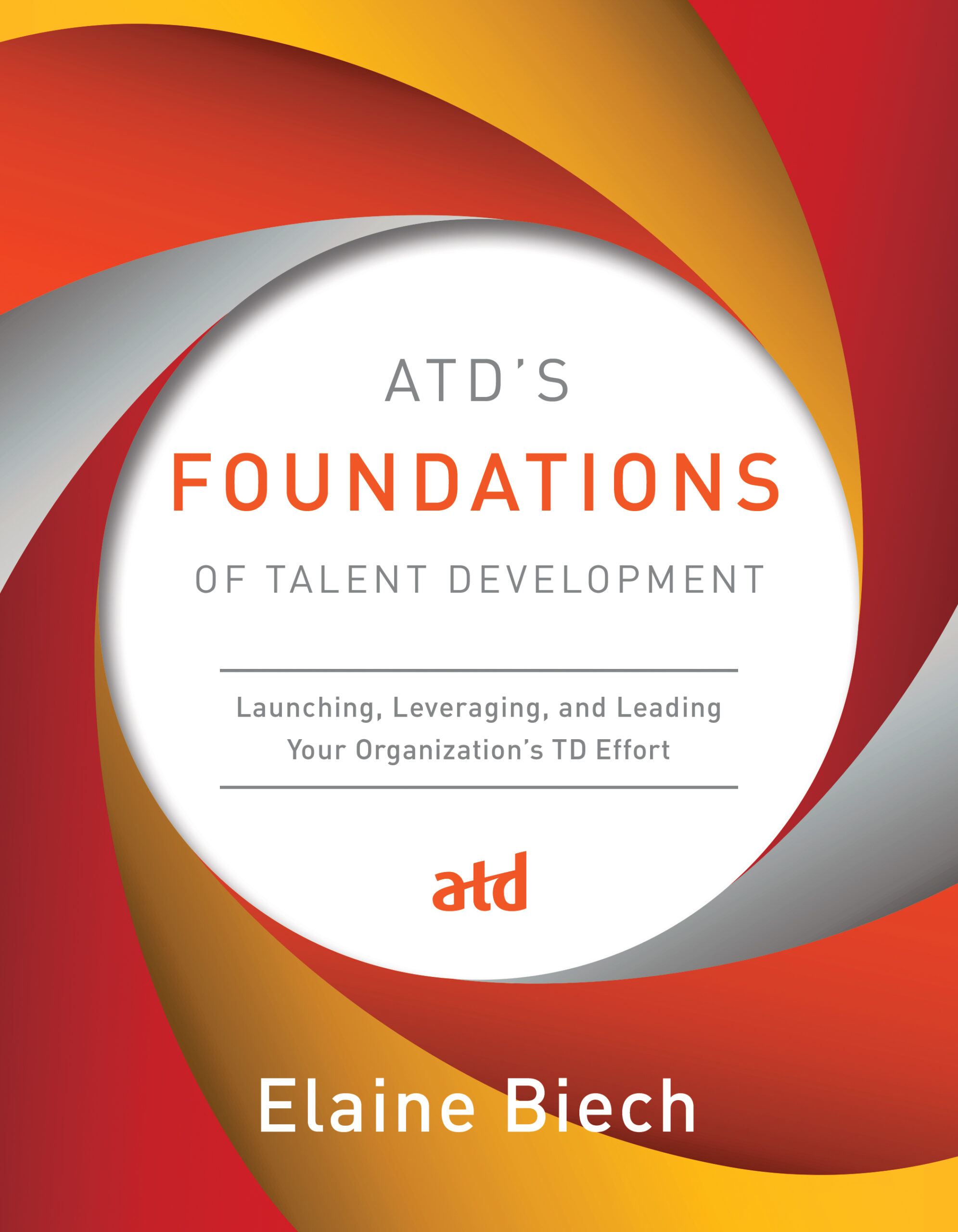I share insights and experiences through a variety of content channels, including industry magazines, websites, podcasts and blogs.
Here's a sample of my contributed content.
ATD Talent Development Body of Knowledge (TDBok)
Source: Association for Talent Development
Published: January 2024
Overview
The TDBoK™ Guide: Talent Development Body of Knowledge, second edition, is the updated and expanded comprehensive collection of concepts, definitions, methodologies, and examples that lays the foundation and guiding principles for those who develop talent in the workplace.
Contribution
I wrote a significant portion of the Technology Application section of the TDBoK leveraging my practical understanding of learning and HR technology as both a practitioner and technologist.
Design for ALl Learners
Source: Association for Talent Development
Published: February 2025
Overview
Design for All Learners empowers instructional designers, trainers, and other talent development professionals to create learning experiences that are accessible to and inclusive of all people. Learn from practitioners’ vulnerable lived experiences, moving stories, and practical advice. Written with accessibility, inclusion, and L&D experts and edited by Sarah Mercier, this book will help you ensure that individuals can fully participate in the talent development and training programs you offer.
Contribution
I wrote chapter 38 - Improving Accessibility With Presentation Captioning.
The Ultimate Guide to Microlearning
Source: Axonify
Published: November 2023
Intro
You’ve no doubt heard about microlearning from thought leaders, vendors and stakeholders. But you might be struggling to find a simple, consistent definition for microlearning. The Ultimate Guide to Microlearning will help you get past the hype and focus on the principles that make microlearning a powerful workplace enablement strategy.
Big Idea
Microlearning is not just about serving up short training content. Yes, it’s important to keep your training bite-sized and quick to consume. But giving your employees a bunch of short videos to watch isn’t going to help them change their on-the-job behaviors in meaningful ways.
ATD's Handbook for Training and Talent Development
Source: Association for Talent Development
Published: May 2022
Overview
Now in its third edition and grounded by the Talent Development Capability Model, ATD’s Handbook for Training and Talent Development offers an up-to-date view of the growing roles of talent development professionals, our changing world of work, and the critical need for business alignment.
Contribution
I wrote chapter 34 - Building Your Organization's Learning Technology Ecosystem.
Are learning Equity Issues Affecting Your Company?
Source: TD Magazine (Association for Talent Development)
Published: August 2021
Intro
Does every employee in your organization—regardless of role, tenure, location, or identity—have an equitable opportunity to develop their knowledge and skills? If an honest assessment of your workplace learning culture led you to answer no, keep reading.
Big Idea
Restore learning equity is a critical part of building a disruption-ready learning culture. This doesn't mean everyone gets the same experience. Instead, every employee needs needs (and deserves) the right experience to help them build their skills and perform at their best.
Want to Close the Skills Gap? First, Bridge the Opportunity Gap!
Source: Training and Development Magazine (Australian Institute of Training and Development)
Published: July 2021
Intro
Skills! Human resources and talent development professionals - from executives to thought leaders to vendors - are all talking about skills. Skills ontologies. Skills marketplaces. Skills clouds. The shift to skills represents a new perspective for many L&D teams. It also raises an important question: is your learning ecosystem ready to accelerate reskilling and upskilling priorities across your workforce?
Big Idea
The skills gap is not the real problem. It is just an effect. The cause is the opportunity gap - the failure to prioritize continuous learning and development as part of the job.
Shattering the Way L&D Thinks about Measurement
Source: CLO Magazine
Published: July 2020
Intro
Square peg. Round hole. This is the problem with learning measurement. The most well-known learning measurement models have been around for decades, and yet the industry continues to struggle with its measurement practices. We're great with surveys. We have plenty of test scores. But most L&D teams still cannot answer the critical stakeholder question: Is the training actually working?
Big Idea
L&D must take a page from our friends in Marketing and adopt data-rich tactics in order to fix our measurement problem and connect learning solutions to business results.
The Path to AI
Source: TD Magazine (Association for Talent Development)
Published: January 2020
Intro
The conversation around AI within TD is accelerating. Technology providers are introducing AI-enabled capabilities within their applications, and TD professionals are beginning to work with open-source AI tools, such as Google's TensorFlow and Microsoft Cognitive Toolkit. However, the industry has more questions than answers, chief among them being "Can AI really make a positive impact on organizational learning?"
Big Idea
AI is not a specific tool or use case. The technology can help L&D solve a variety of problems, from personalization and translation to content development and impact analysis. However, before we can reap the benefits of AI fully, L&D must fix our measurement problem and improve our data practices.
ATD's 2020 Trends in Learning Technology
Source: Association for Talent Development
Published: 2019
Section: Chapter 5 - AI
Intro
The talent development field is rife with new technologies and buzz-worthy trends. While we are quick to explore new tools, we are often quite slow to adopt them. Applying AI, a technically complicated and relatively unfamiliar concept, within workplace learning is likely to be challenging right out of the gate.
Big Idea
To full take advantage of AI-enabled technology, L&D professionals must understand the foundational capabilities of the technology. We must then identify the priority workplace learning problems this technology can help to address and improve our data practices before we can successfully adopt AI in our practices.
More Than Netflix: The Real Potential of Personalised Learning
Source: Training and Development Magazine (Australian Institute of Training and Development)
Published: June 2020
Intro
Netflix has become a popular metaphor for personalization in L&D. There's nothing wrong with Netflix. They're very good at what they do. However, the idea of creating a "Netflix for learning" doesn't make sense when you consider what Netflix actually does. Their totally-justified goal is to keep you watching by providing you with a never-ending supply of content recommendations. That's why Netflix is a bad metaphor for personalization in learning.
Big Idea
Personalization in learning goes well beyond content recommendations. L&D has the opportunity to apply data-enabled technology and provide a more holistic support experience that gets people the help they need when and where they need it.
Cool, Calm, Connected: How Briscoe Group Maintained Frontline Resilience During a Lockdown
Source: Training and Development Magazine (Australian Institute of Training and Development)
Published: June 2020
Intro
March 25, 2020 brought about a sudden and sobering reality for the team at Briscoe Group Limited. Like many companies around the world, they were required to close their 85 homeware and sporting goods stores across New Zealand as the nation entered a level four lockdown due to the COVID-19 pandemic. However, the team was intend on maintaining employee engagement, and perhaps even strengthening their workplace culture, despite the most trying circumstances.
Big Idea
Companies that were able to most effectively overcome the challenges introduced on the frontlines of the pandemic took a decidedly people-first approach to their response. Briscoe Group provides an awesome example of how to put people first in the face of business (and social) disruption.
The Science Behind Microlearning Effectiveness
Source: Training and Development Magazine (Australian Institute of Training and Development)
Published: December 2019
Intro
Learning is complicated. It's personal, contextual and dynamic. Researchers have spent decades exploring the inner workings of the human brain and they've only scratched the surface. L&D pros don't have to be scientists to help people develop. However, they do have to understand the fundamentals in order to design solutions based on how people really learn.
Big Idea
Good microlearning solutions don't work just because the content is shorter. They make an impact because they leverage some of the most basic principles of learning science to help people grow their knowledge more quickly and retain it long-term.
ATD's Foundations of Talent Development
Source: Association for Talent Development
Published: 2018
Section: Chapter 13 - A Modern Framework for Evolving Workplace Learning Practices
Intro
Designing and implementing an effective learning and performance strategy within a modern workplace is more challenging than ever before. Businesses must exist in a near-constant state of change to meet the demands of increasingly savvy consumers and fend off the omnipresent threat of disruption. How can talent development ensure each employee gets the right support while meeting the needs of a complex business?
Big Idea
The Modern Learning Ecosystem Framework can help organizations build a smarter ecosystem and develop right-fit solutions at the pace and scale of business.
Learning in Layers
Source: TD Magazine (Association for Talent Development)
Published: January 2017
Intro
The speed and complexity of the modern workplace has put a strain on learning and development's ability to provide meaningful, timely support. L&D is always in "chase mode," given the need to support a variety of functions without complete influence on the direction of the business. As a result, L&D's value is being challenged by employees and senior stakeholders alike. L&D must shift its mindset and take a holistic perspective on employee development to meet the needs of the modern organization.
Big Idea
The Modern Learning Ecosystem Framework introduces a "layered" approach to workplace learning, allowing L&D to provide just the right support at the right time to solve problems at pace and scale.













